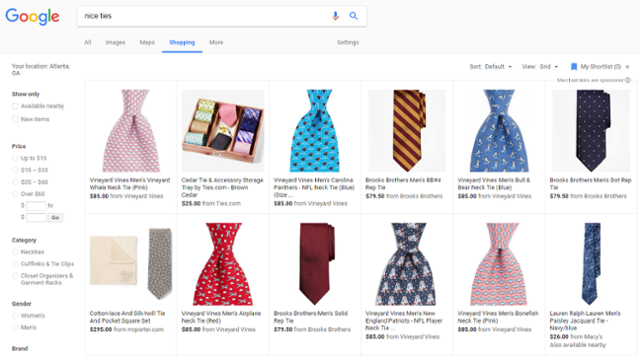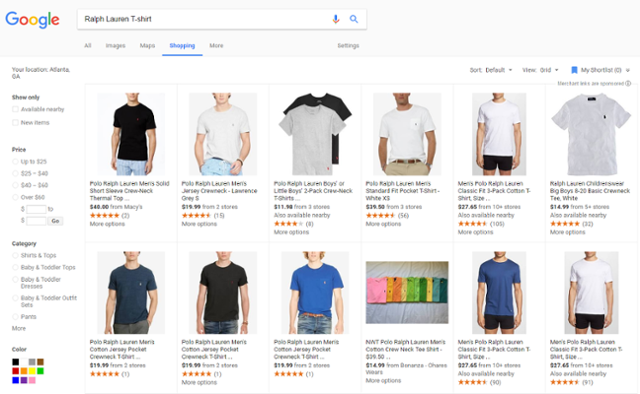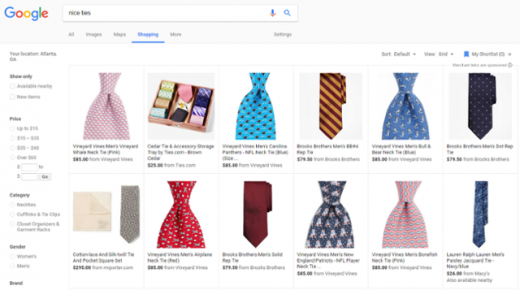Why Google Shopping Isn’t Working for You
— April 24, 2017
Google Shopping has come a long way from its humble beginnings as “Froogle” in 2002. When Google restructured its shopping platform in 2012, as a paid model where merchants could list their products on the platform, it immediately became a point of focus for many eCommerce merchants.
With the sheer volume of people using Google and the power behind Google’s analytics and AdWords, it’s no surprise that retail revenue from Google Shopping increased 52% year over year in Q1 of 2016.

As more merchants flood Google Shopping to get in on the rush of being some of the first movers (relative to other saturated shopping platforms), much more attention is being placed on Google Shopping optimization strategies. This means more ads and feeds needing to be optimized, more focus on conversion rates, and many more revenue goals.
If Google Shopping hasn’t been working for you, there are a number of reasons that could be the root of your problem. These issues should be addressed—or, at the very least, prepared for if you have not encountered them—in order to start seeing the lucrative returns from Google Shopping.
Reason #1: It’s Unexplored Territory
Facebook, Amazon, and traditional search engines have nearly a decade of trial and error built into them. Someone looking to jump into a relatively new eCommerce platform will likely be burdened with the weight of the learning curve.
Few people have mastered the nuances and effective strategies of Google Shopping, and they are likely focusing on optimizing their own businesses rather than providing advice to competition.
Insufficient understanding of any platform is the obvious first reason Google Shopping might not be working for you. Whether it comes down to not getting the amount of traffic to justify the time spent optimizing for Google Shopping or even just a lack of technical knowledge, each of these issues can be addressed with adequate research.
Many of the problems revolve around managing Google Shopping campaigns, and the additional following points will help solve them.
#2 Not Varying Your Product Ads
One of the most common self-imposed limitations on a Google Shopping campaign is creating a cookie-cutter ad for products that have many variations.
For example, let’s say you want to sell Ralph Lauren t-shirts, and you have 10 different color options. If your ad showcases a red shirt, people searching for a black shirt might disregard it as being something they don’t want.

Instead of having one ad for a Ralph Lauren t-shirt with a default color (red), you should create 10 different Google Shopping ads for each color variation of the shirt. By only producing one advertisement for a product with multiple options, you are reducing the click rate and missing out on potential sales.
With different ad variations, you will not only be able to get traffic looking for that exact variation; you will also know which versions are performing better. This can help you control inventory levels and observe patterns that could tip you off to successful releases in the future.
#3 Not Bidding on Your Ads Correctly
Using Google’s Bidding Landscape can help you understand how your ads are performing, but it shouldn’t be your only source of information. Google’s tools in Google Shopping can be surprisingly elementary, in comparison to Google’s reputation, when you don’t know what to look for.
Beginners aren’t provided the necessary scope to understand how to optimize a certain campaign’s performance. This lack of insight that nudges merchants into the direction of bidding down or bidding up is a point of static for many merchants.
To effectively use bid landscapes, you must have a campaign that meets Google’s requirements:
- You need an established criterion, ad group, or campaign to give the system baseline information to help generate predictions.
- Enable Conversion Tracking.
- The account can’t be a test account. Since bid landscapes are based on previous performance and test accounts don’t have any performance history since they don’t serve ads, Google’s Bidding Landscape can’t do anything for you.
Google Data Studio is also a great way to transform your data into easily readable reports.
Retailers that are not able to accurately bid for their ads are either going to get stuck overpaying or will not see results. This problem can be solved either by working with a Google Shopping specialist or using an arsenal of optimization techniques to increase the amount of exposure your ads are receiving.
#4 Failure to Optimize the Google Shopping Feed
Google is rapidly creeping up on Amazon when it comes to where shoppers start their search: 38% start with Amazon and 35% start with Google.
Most search engine optimization strategies are very front-loaded and don’t provide results until weeks or months down the road. Since Google’s Shopping campaigns don’t use keywords, Google uses the most relevant product based on the feed details.
For example, if a user is searching for a Fruity Melon Yankee Candle, Google is going to show a Product Listing Ad from your feed based on the product that best matches the query. You want to make sure that your relevant and exact product shows up.
Your product titles and descriptions should be written in a similar way to how SEO page titles and meta descriptions are written. Your potential product titles and descriptions can come from search query reports from Google Webmaster Tools, AdWords Keyword Planner, or Historical Shopping campaign search queries.
Your product title and description should include the product name, as well as any pertinent information.

A lack of effort in product images can be a good explanation for why your ads are not getting clicked. Users want to see an image and think, “Yes, that’s exactly what I want,” or, “Wow, that looks way more like what I’m looking for than the rest of these.” Do whatever you can to excel with your product images, and it will likely pay dividends once your ads start beating out the competition.
Digital & Social Articles on Business 2 Community
(36)


